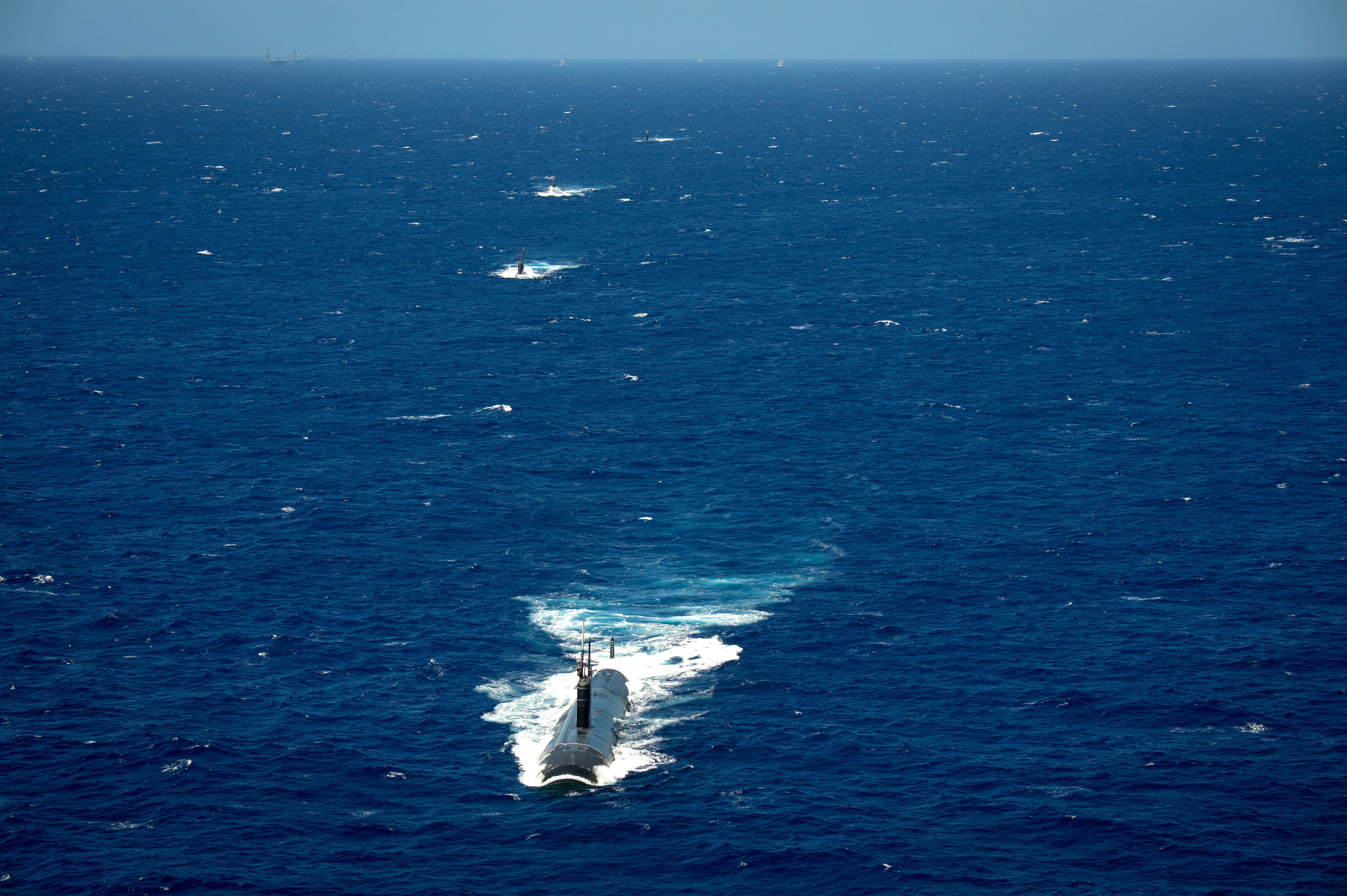
The Navy’s submarine force is looking to reinvigorate its high-end warfare training and plans to do so by finding efficiencies within the current testing and certification schedules, the commander of submarine forces said.
Vice Adm. Joseph Tofalo said at the Naval Submarine League’s annual symposium yesterday that he was taking a hard look at that predeployment schedule to find as much as 10 to 15 days that could instead be devoted to improving high-end skills that would be needed against a peer or near-peer adversary.
“The bottom line is, we’re trying to increase the amount of at-sea combat-type experience,” he said.
“Sub-on-sub interactions, more tactical development. We’re really working hard by taking a hard scrub of our assessment and certification process, trying to eliminate any redundancies, any overlaps.”
He told USNI News after his speech that “only a submarine can do sub-on-sub (anti-submarine warfare), so we’ve got to make sure we are making sure that we are the best in the world at doing that.”
“Theater undersea warfare, effects in the sea and from the sea. And the from-the-sea part has been a big focus of what we’ve been doing, Tomahawk strikes for examples,” over the last decade or two, he said
“But the piece of theater undersea warfare, effects in and from the sea – the in-the-sea part, that sub-on-sub piece, that’s something I want to make sure that we continue to be the best in the world at. The other stuff comes naturally – there’s a natural tendency to be drawn (to that mission), there are external customers that have a demand signal. But the main customer (for sub-on-sub interaction) is internal, because it’s the submarine force that’s going to have to do those kinds of missions, and that’s what I want to make sure that we’re properly focused on.”
Tofalo made clear that this training would not come at the expense of operational availability or time in the shipyard, nor would he allow it to lengthen deployment schedules. He said attack submarine crews are already “doing double-pumps” in their deployment schedule – they deploy for six months every 18 months, whereas the overall Navy Optimized Fleet Response Plan calls for one seven-month deployment every 36 months – and he said this extra training would not over-burden the sailors and create longer deployments.
“I’m not piling anything else on, that’s not the intention,” he said.
“But we do feel that because of the change in the world stage, we have got to make sure that, it’s not about lobbing Tomahawks at the desert that’s been going on for the last 10 or 15 years. There’s additional skills, we’ve got to make sure we get back to some of the basics and make sure we are very good at that high-end warfighting stuff that only the submarine force can do, because that’s what we’ll be called on to do. And so that’s why we’re trying to find those efficiencies and make sure that we’re maximizing those training opportunities.”
Rear Adm. Fritz Roegge, Commander of Submarine Force Pacific, said today at the symposium that inserting high-end warfare into predeployment training was important, but so is practicing these skills throughout deployments. He called for more in-theater events, “which has the extra benefit then of making sure those officers, those crews are practicing those skills in the environments in which they might be called upon to use them. It’s a big ocean, and from the surface the ocean looks like the ocean, but the thermocline, the bathymetry – even the Eastern Central Pacific around me where I’m doing my workups (in Hawaii) is very different than a lot of the places where (commanders are) deploying forces.”
Tofalo also told USNI News afterwards that submarine command courses are now including theater ASW segments, which hasn’t always been the case.
“Theater ASW is a team sport, and we need to learn how to plan that team when you’re in a command course,” he said, which allows commanders to learn to incorporate destroyers, P-3 and P-8 maritime reconnaissance aircraft and other fleet assets that contribute to ASW.





